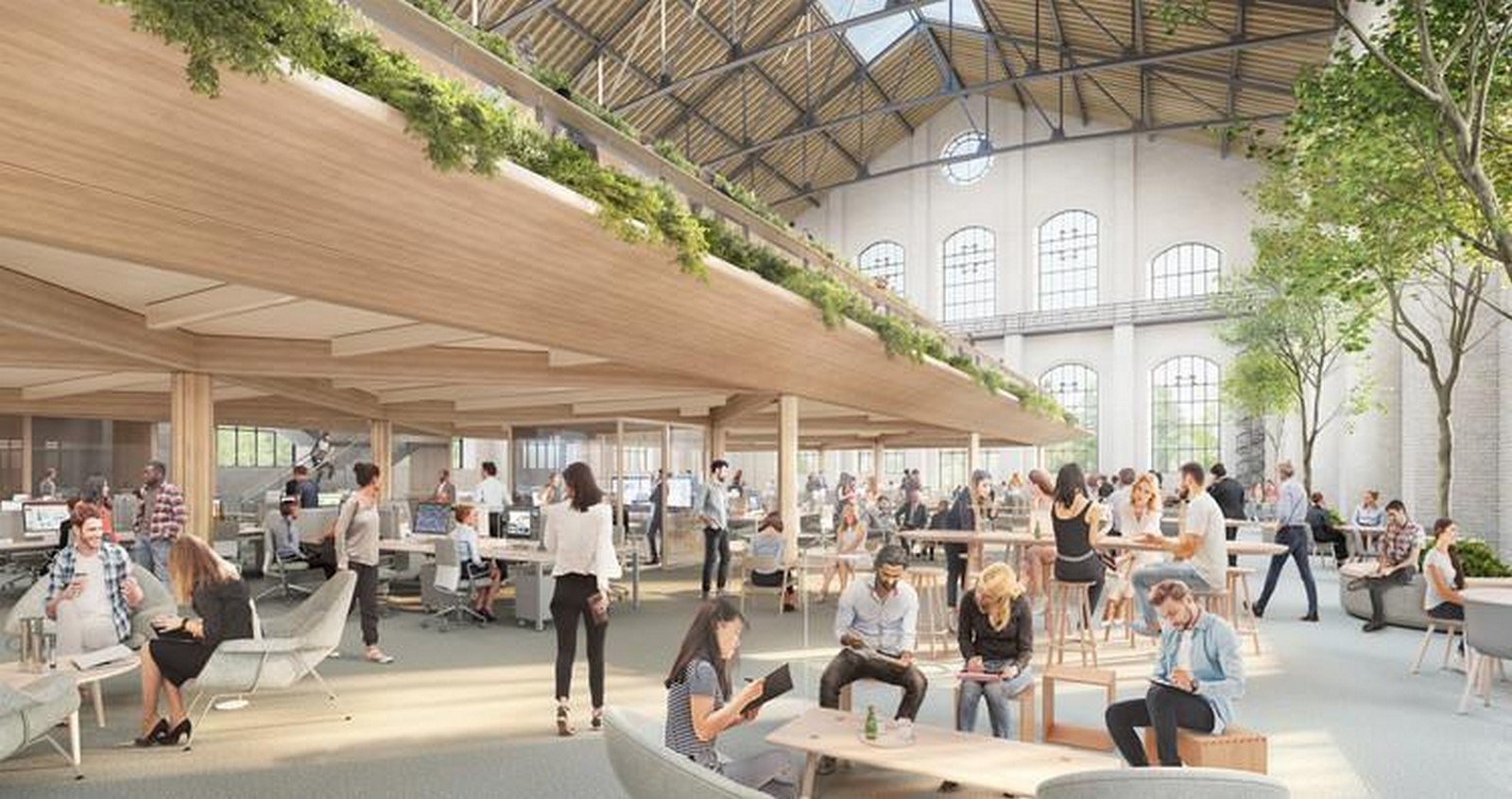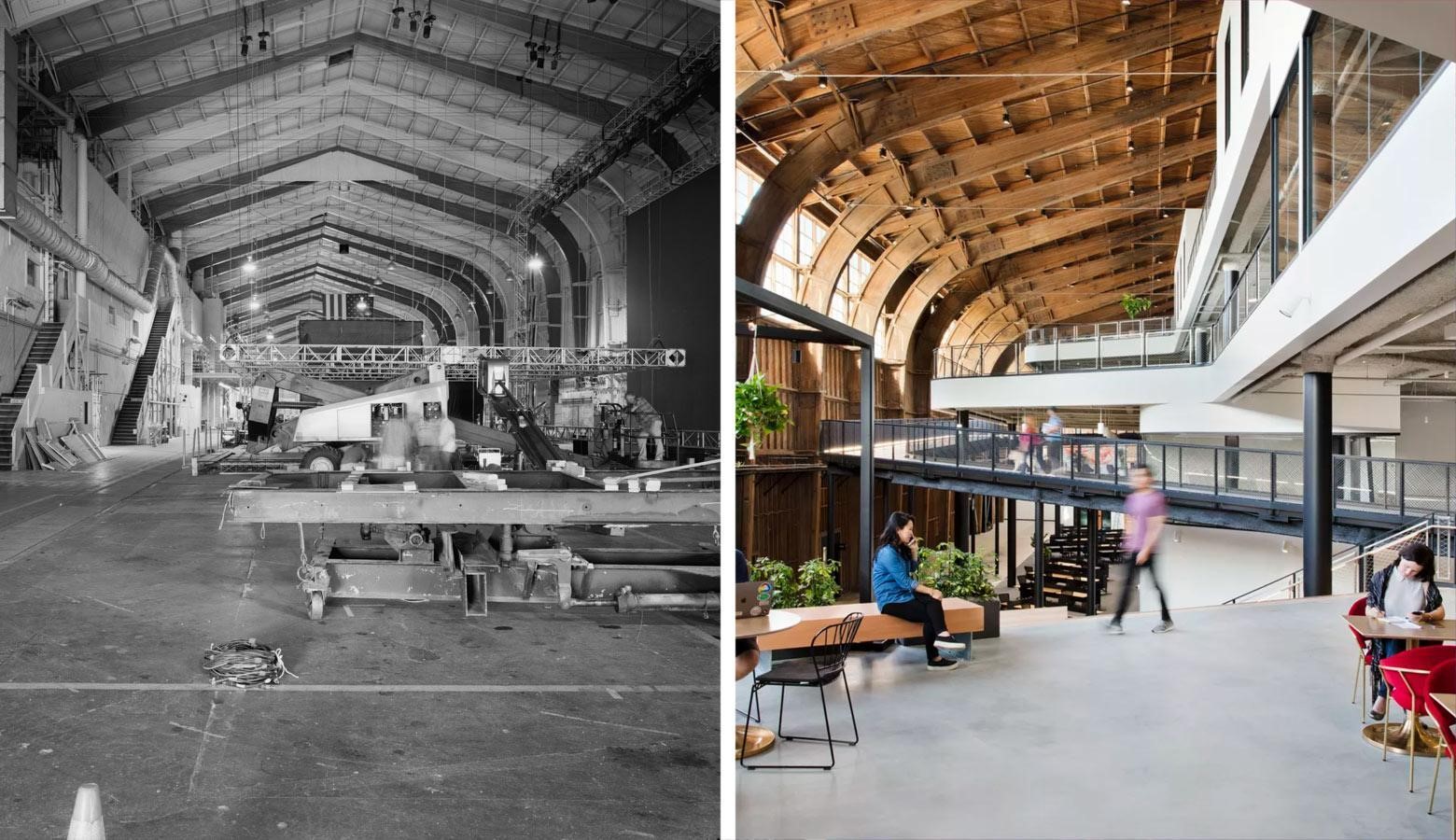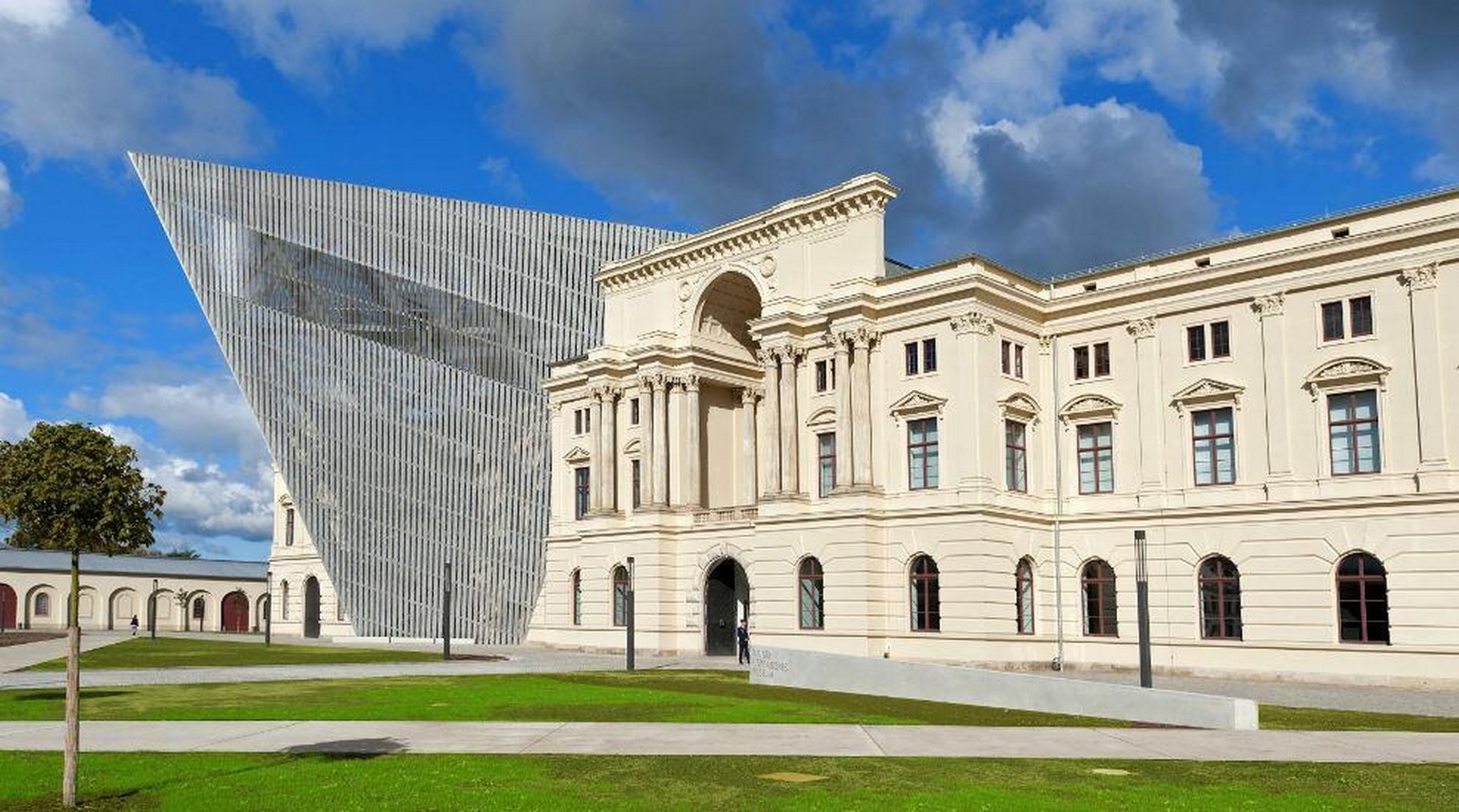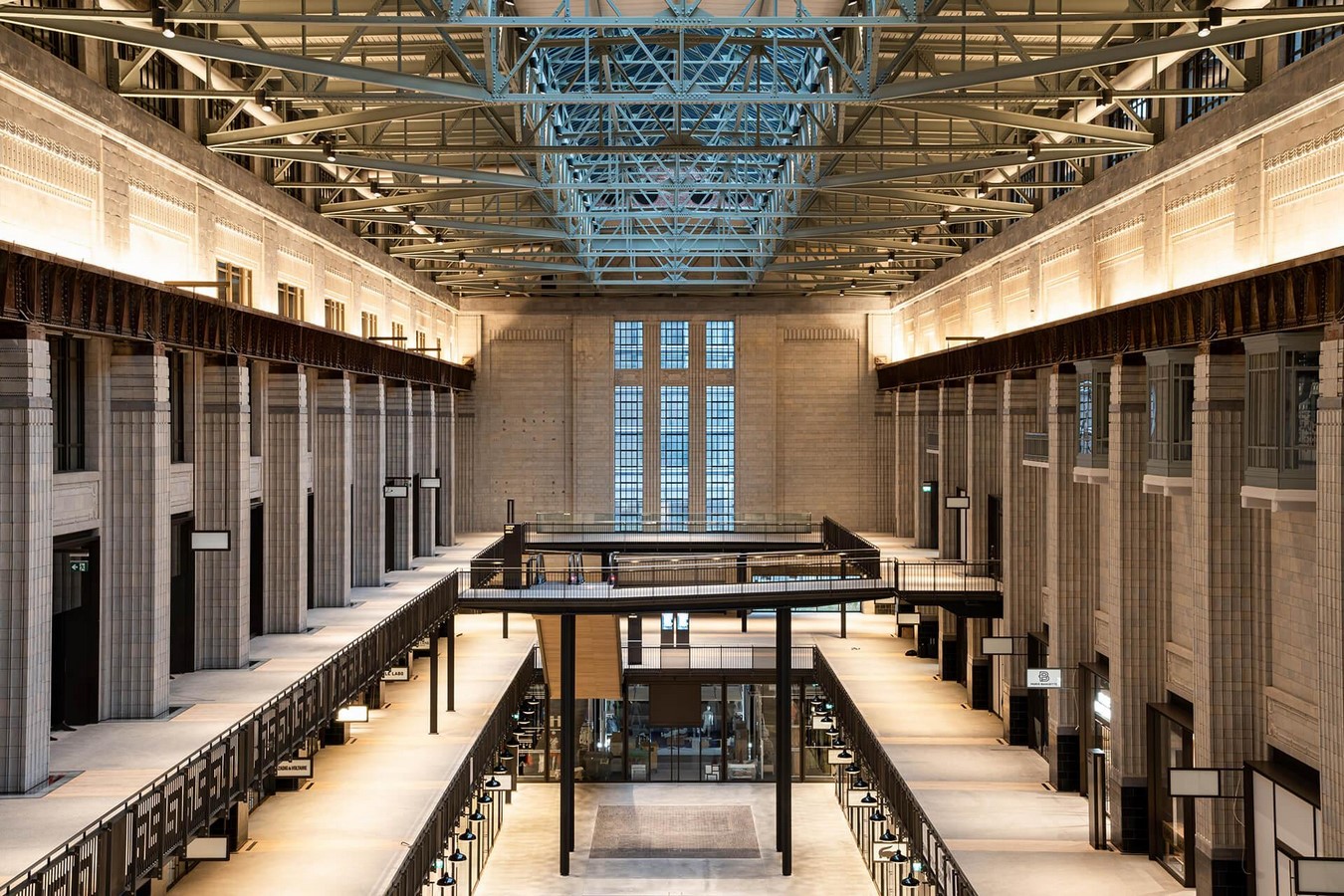
Revitalizing Aging Infrastructure: Strategies for Adaptive Reuse of Historic Buildings – RTF
[ad_1]
The practice of assigning a new function to an existing old structure while retaining its historic character is known as adaptive reuse. It is a compelling solution to two major problems faced by cities, the ever-increasing requirement of space for the exploding population and preservation of cultural context and historic structures. Tangible heritage in the form of old dilapidated structures is one of the few remnants of our culturally rich past. The conservation of these structures can lend a certain character to the otherwise drabness of modern urban spaces.

Benefits of Adaptive Reuse
Preservation of cultural heritage: Old structures and buildings often serve as the tangible representation of a community’s history, offering insight into architectural styles, construction methods and social context of their time. By reusing these structures, we maintain a vital connection to the past.
Economic Viability: Adaptive reuse can be economically advantageous compared to demolition and new construction. Older buildings may have strong, durable foundations and structures that can be refurbished at a lower cost than building anew. Additionally, adaptive reuse projects can attract investment, create jobs, and boost local economies.
Sustainable Practice: Embracing sustainable practices is paramount in our age of environmental consciousness. Adaptive reuse inherently aligns with sustainability goals by repurposing existing resources, reducing waste, and often incorporating energy-efficient technologies. Preserving old buildings can also contribute to a more compact urban footprint, promoting public transportation and reducing sprawl.
Cultural Identity and Sense of Place: Historic buildings contribute to the identity and character of a place. When these structures are preserved and repurposed, they enhance the sense of place, fostering a stronger connection between residents and their surroundings. This, in turn, can stimulate community pride and engagement.
Tourism and Community Engagement: Successfully repurposed historic buildings can become significant tourist attractions, drawing visitors and revenue to the community. Furthermore, adaptive reuse projects often involve the local community in the decision-making process, fostering a sense of ownership and pride among residents.

Challenges and Considerations
While the benefits of adaptive reuse are substantial, it is not without its challenges and complexities. Several key considerations must be taken into account:
Historic Preservation: Balancing the preservation of historic elements with the need for modern functionality can be challenging. Decisions must be made regarding which features to retain, restore, or adapt to accommodate new uses.
Feasibility Analysis: Not all historic buildings are suitable for adaptive reuse. Some may have deteriorated to the point where rehabilitation is financially or structurally unfeasible. Rigorous feasibility analysis is essential to determine whether a project is viable.
Regulatory Hurdles: Navigating the regulatory landscape, including zoning regulations, building codes, and historic preservation requirements, can be complex. It may require close collaboration with local authorities and historic preservation organizations.
Financing: Securing funding for adaptive reuse projects can be challenging. While various financial incentives, such as grants and tax credits, exist, additional creative financing options may be necessary to cover the costs of rehabilitation.
Design Challenges: Adapting historic buildings to modern uses often presents design challenges. Architects and designers must find innovative solutions that preserve the building’s character while meeting contemporary needs.
Market Analysis: Identifying the right use for a historic building and gauging market demand is crucial. A thorough market analysis can help ensure the long-term success of the project.

Strategies for Successful Adaptive Reuse
To overcome these challenges and maximize the benefits of adaptive reuse, several strategies can be employed:
Historic Integrity: Prioritize the preservation of historic integrity. Maintain original facades, architectural elements, and historical character whenever possible.
Collaboration: Collaborate with architects, designers, preservationists, and community stakeholders who specialize in adaptive reuse. Their expertise can be invaluable in creating designs that honour the past while accommodating the present.
Sustainability: Incorporate sustainable building practices into the project. This includes energy-efficient systems, green materials, and sustainable landscaping. Not only does this reduce the environmental impact, but it also enhances the building’s long-term viability.
Community Engagement: Involve the local community in the decision-making process. Seek input and feedback to build support for the project and ensure that it aligns with community values.
Flexibility: Design the space with flexibility in mind. This allows for future adaptability as tenant needs change over time. Versatile spaces can accommodate a range of uses, ensuring the building’s continued relevance.
Mixed-Use Development: Consider mixed-use development, combining residential, commercial, and cultural spaces within the building. This diversifies the building’s functions and can enhance its economic viability.
Public Spaces: Incorporate public spaces, such as museums, galleries, or cafes, within the building. These spaces can attract visitors and create a vibrant atmosphere, further contributing to the community’s cultural identity.
Regulatory Compliance: Work closely with local authorities to obtain the necessary permits and approvals. Engage proactively with regulatory bodies to address potential challenges and streamline the process.
Maintenance and Management: Develop a comprehensive maintenance plan and establish effective management to ensure the building’s continued upkeep and functionality. Regular maintenance is critical to preserving the building’s historic features.
Marketing and Promotion: Develop a marketing and promotional strategy to attract tenants, visitors, and tourists. Highlight the building’s historical significance and unique features to draw attention and support.

Case Studies in Adaptive Reuse
To illustrate the effectiveness of these strategies, let’s examine a few successful adaptive reuse projects:
The High Line, New York City: The High Line is an elevated railway line that was converted into a linear park and green space. This adaptive reuse project preserved the railway’s historic character while creating a valuable public amenity and boosting property values in the area.
The Battery, San Francisco: The Battery is a private social club housed in a historic 19th-century building. This project combined preservation with modern amenities, offering a unique and exclusive experience to its members.
Tate Modern, London: The Tate Modern art gallery is situated in a former power station. The adaptive reuse of this industrial structure created a world-renowned cultural institution while preserving the building’s iconic turbine hall and brick facade.
The St. Anthony Hotel, San Antonio: The St. Anthony Hotel, a historic landmark, underwent extensive renovation and adaptive reuse to become a luxury hotel. This project retained the building’s grandeur and historical significance while catering to the needs of modern travelers.

Societal Implications
The adaptive reuse of historic buildings has broader societal implications beyond their benefits. These implications include:
Sustainable Urban Development: Adaptive reuse promotes sustainable urban development by repurposing existing infrastructure rather than consuming greenfield sites. This helps combat urban sprawl, reduces transportation demands, and minimizes resource consumption.
Cultural Preservation: By preserving historic buildings and their cultural significance, adaptive reuse safeguards a community’s identity and heritage. This contributes to a sense of place and belonging among residents.
Economic Growth: Adaptive reuse projects stimulate economic growth by attracting investment, creating jobs, and increasing property values in the surrounding area.
References
https://www.autodesk.com/design-make/articles/adaptive-reuse#:~:text=Adaptive%20reuse%20is%20the%20repurposing,blight%2C%20and%20igniting%20social%20change.
https://www.masterclass.com/articles/adaptive-reuse-architecture-guide
https://www.archdaily.com/783283/20-creative-adaptive-reuse-projects
https://www.dezeen.com/tag/adaptive-reuse/
https://parametric-architecture.com/building-a-sustainable-environment-a-guide-to-adaptive-reuse-architecture/
[ad_2]
Source link




